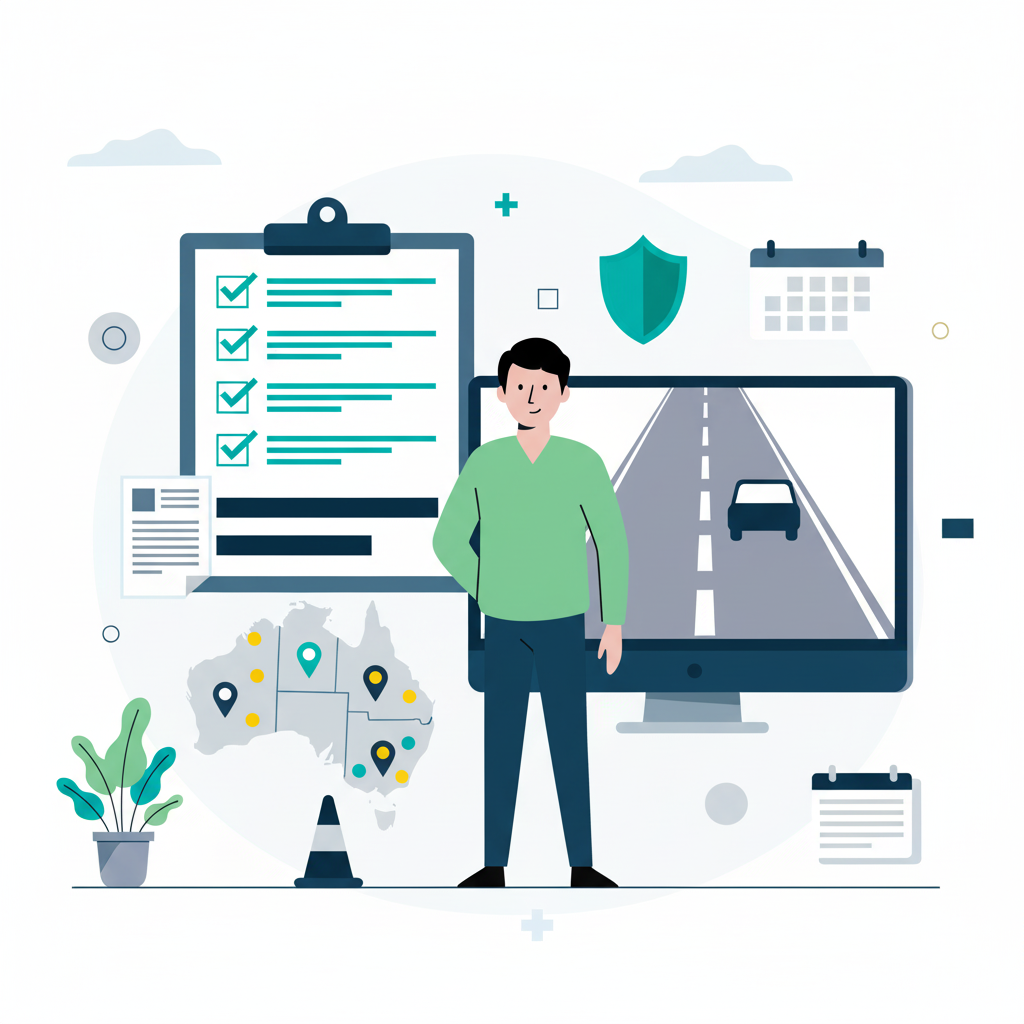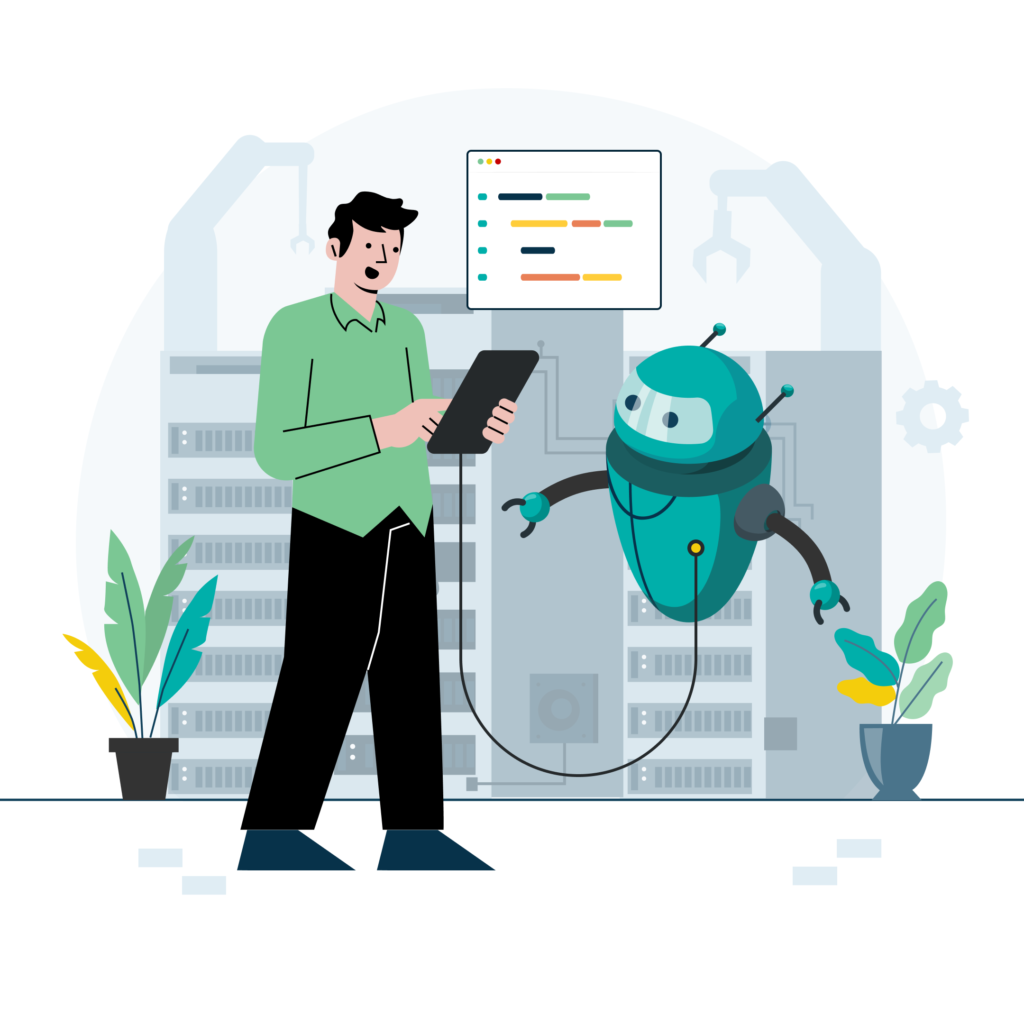You’re evaluating whether to trial autonomous vehicles in Australia. The problem? Eight different state and territory governments, each with their own rules. NSW wants both hands on the wheel (sometimes). Queensland says one hand is fine. South Australia? They’ll let you go completely driverless under certain conditions.
This article is part of our comprehensive guide on autonomous vehicles and robotics in Australia, where we explore the technical, commercial, and regulatory landscape for technology leaders.
This fragmentation makes deployment planning a headache. But there’s a timeline you need to know about: the federal government is developing a unified Automated Vehicle Safety Law (AVSL) framework targeted for 2027. That means 2025-2026 is your preparation window.
In 2024, Waymo became the first major international autonomous vehicle company to navigate Australia’s regulatory approval process. Their market entry strategy and NSW partnership approach provides a useful reference point for what you’ll face.
This guide covers what you need to know about NSW trial requirements, how different states compare, the 2027 timeline, insurance obligations, and how Australia stacks up against California’s benchmark regulations.
What are the current Australian regulations for autonomous vehicles?
Right now, Australia’s autonomous vehicle regulations are fragmented across state and territory lines. There’s no unified federal framework yet. Each state administers testing through what they call “automotive technology trial permits” that require approval from their transport authority.
The National Transport Commission is working to fix this mess. They’re developing the Automated Vehicle Safety Law (AVSL) to harmonise all these variations by 2027.
If you want to test in NSW, you need approval for an “automotive technology trial” from Transport for NSW. They review your application and recommend to the minister for transport whether to grant the permit. NSW has supported AV development through limited trials like automated shuttles, but nothing at the scale Waymo operates in the US.
The differences between states are significant and sometimes bizarre. Western Australia requires both hands on the steering wheel. Queensland only requires one hand. Other states focus on broader control definitions rather than getting specific about hands. Victoria requires vehicles with modifications to steering, braking, and accelerating systems to operate under an Automated Driving System permit from VicRoads. Northern Territory got philosophical about it, stating: “Proper control means the driver is actively driving the vehicle, not merely supervising a system.”
The technical safety standards are governed by Australian Design Rules (ADRs), which are based on UN international standards. Australia is participating in the UN work to develop international standards for AVs, and these will form the basis of ADRs for vehicles with Automated Driving Systems.
Aaron de Rozario, executive lead for regulatory reform at the National Transport Commission, is confident about the timeline: “We’re confident we’ll have that regulatory environment in place when it’s necessary. We’re looking to have a Commonwealth law that will govern automated vehicles, but importantly, across states and territories, we’ll have harmonised road traffic laws.”
When will autonomous vehicle regulations be finalised in Australia?
The Automated Vehicle Safety Law (AVSL) is scheduled for finalisation in 2027 according to the National Connected and Automated Vehicle Action Plan 2024-27. The NTC is working toward introducing AVSL by 2026, but the federal commitment remains 2027 for the complete end-to-end AV regulatory framework.
Waymo submitted to the NTC consultation and pushed hard for the government to pass AVSL by 2026. Australia is set to miss that deadline. 2027 is the realistic target.
This timeline creates some urgency around your deployment readiness. Do you participate in trials during 2025-2026, or do you wait for national harmonisation?
State regulations will continue governing testing until AVSL takes effect. That means you need to comply with transitional state requirements while also preparing for 2027 federal standards. It’s a trade-off: gain early regulatory engagement experience versus avoiding state-specific compliance work that will be superseded by the national framework. Understanding how to integrate regulatory compliance into your organisational readiness assessment will help you make this strategic decision.
What specific requirements must companies meet to get Transport for NSW approval for autonomous vehicle trials?
Transport for NSW requires you to get an automotive technology trial permit before you can test autonomous vehicles. You’ll navigate a multi-stage process: preliminary discussions, formal application submission, technical review, and ministerial approval.
Waymo’s engagement provides a useful precedent. They began preliminary discussions with Transport for NSW about testing a driverless taxi service in Sydney. They even engaged GRACosway lobbying firm to represent their interests.
Your trial applications must demonstrate compliance with Australian Design Rules. The technical documentation typically covers your Automated Driving System (ADS) specifications, sensor redundancy architecture, fail-safe system design, and cybersecurity protocols. Those ADRs based on UN standards include cybersecurity requirements covering data privacy, system compromise prevention, and secure software updates. Understanding the technical specifications and sensor architecture requirements for Level 4 autonomy is critical when preparing your documentation.
You’ll need comprehensive insurance coverage. That means product liability insurance covering manufacturing defects and ADS failures. Public liability insurance for third-party injury and property damage. And cyber risk insurance addressing data breach and system compromise. The coverage amounts are verified during approval and vary based on your operational design domain scope, testing location density, and whether you’re running Level 4 or Level 5 autonomy.
Your safety protocols must define safety driver presence requirements, operational design domain boundaries using geofencing technology, and emergency intervention procedures. The safety validation systems and redundancy requirements you implement will directly impact your approval prospects. Geofencing restricts autonomous operation to predetermined geographic areas with mapped infrastructure. Your trial applications must specify geofenced zones, infrastructure mapping completeness, and operational limitations outside defined boundaries.
How long does approval take? Waymo’s ongoing engagement since 2024 suggests a multi-month to potentially year-long process. It depends on the technical complexity and how complete your documentation is.
How do Australian autonomous vehicle laws compare to US regulations?
Australia is following a national framework development model. The US maintains a state-by-state approach that creates regulatory fragmentation similar to what Australia has now during this transitional state.
California represents the benchmark with the most stringent US state requirements. The California Department of Motor Vehicles has been administering autonomous vehicle regulations since 2009.
California requires separate testing permits and commercial deployment permits with detailed disengagement reporting. Testing permits allow autonomous vehicles with a safety driver. Deployment permits enable driverless operation. Every company must report disengagements—those moments when the autonomous system gives up and a human takes control. These reports are publicly available, which keeps everyone honest.
Australia’s proposed AVSL will provide a unified national framework that eliminates state variation. That’s a potential regulatory advantage. Waymo has completed 10 million driverless rides in five US cities including Los Angeles and Austin, so they’ve got a mature testing baseline. Understanding how regulatory frameworks enable commercial robotaxi operations provides context for why Australia’s approach matters for deployment timelines.
The liability frameworks differ significantly. Australian AVSL proposes a fundamental shift from driver liability to manufacturer responsibility. When the Automated Driving System operates autonomously, legal responsibility transfers to manufacturers and fleet operators. The US maintains a mixed liability model that varies by state.
Insurance requirements in California specify minimum coverage amounts and collision reporting thresholds. The Australian framework is developing similar requirements through state trial programs. Insurance for AVs shifts focus from individual driver liability to product liability, fleet operators, and technology risks like software bugs and cyberattacks. Simon Donovan, executive general manager at DKG Insurance Group, put it plainly: “No, self-driving cars will not kill insurance, but they will transform it. The industry will adapt rather than disappear.”
Waymo’s California testing since 2015 provides a maturity benchmark—over a decade of regulatory engagement. Australia’s 2024+ regulatory development represents a later-stage entry with opportunity to learn from California precedents. But Australian deployment will lag US markets unless the national framework gets implemented efficiently.
What are the key differences between NSW and other state regulations for self-driving cars?
NSW uses Transport for NSW automotive technology trial approval requiring state authority permission. Pretty straightforward.
Victoria requires vehicles with modifications to steering, braking, and accelerating systems to operate under an Automated Driving System permit from VicRoads. Plus they want hands continuously on the steering wheel during testing.
Queensland requires only one hand on the wheel. They also undertook the largest on-road connected and automated vehicle trial to date.
South Australia is the standout. They permit no safety driver presence under certain conditions, making them the most permissive state. This positions South Australia as an attractive testing ground if you’re seeking to validate driverless operation before the national framework takes effect.
These variations create real challenges for multi-state testing. If you’re trialling autonomous vehicles across multiple Australian cities, you’ll need to comply with different safety driver requirements, documentation standards, and approval processes in each jurisdiction. Tesla FSD’s September 2025 Australian launch highlighted these differences—they required separate compliance approaches.
The AVSL framework aims to harmonise these variations. When you’re evaluating trial participation, you need to assess whether to develop compliance strategies for multiple state frameworks during 2025-2026 or wait for national harmonisation. The decision balances early market entry and testing data against compliance complexity and potential regulatory rework when AVSL takes effect.
What insurance coverage is required for autonomous vehicle trials in NSW?
NSW automotive technology trial approval requires comprehensive insurance coverage that Transport for NSW will verify. The Commonwealth Automated Vehicle Safety Law being developed will establish a regulator and address liability, insurance, data privacy, and cybersecurity requirements.
You need several policies. Product liability insurance covering manufacturing defects, ADS failures, and system malfunctions. Simon Donovan explained the shift: “With autonomous vehicles, responsibility shifts toward the vehicle manufacturer, the software developer, and the fleet operator. This will create a much stronger emphasis on product liability and cyber risk insurance rather than traditional motor cover.”
Public liability insurance must cover third-party injury, property damage, and collision coverage. As accident rates decline, personal motor premiums may reduce. But new risks will rise from system hacks to software bugs.
Cyber risk insurance represents a new coverage category addressing data breach, system compromise, and hacking incidents. Fleet insurance for multi-vehicle testing programs requires specialised autonomous vehicle coverage that currently lacks established market pricing in Australia. This makes it difficult to develop accurate business cases when you cannot quantify insurance costs precisely.
Coverage amounts vary based on operational design domain scope, testing location density, and Level 4 versus Level 5 autonomy classification.
Here’s an interesting data point: over 80% of surveyed respondents expressed uncertainty about liability in autonomous vehicle incidents. That highlights the knowledge gap between current driver-focused liability frameworks and emerging manufacturer-focused models.
How does liability shift from drivers to manufacturers under the proposed Australian autonomous vehicle framework?
The AVSL framework proposes a fundamental liability shift from driver responsibility to manufacturer and fleet operator responsibility for Level 4 and Level 5 autonomous vehicles.
When an Automated Driving System operates autonomously, legal responsibility transfers from the supervising driver to the ADS manufacturer for system failures, sensor malfunctions, and decision-making errors. It’s a complete inversion of how motor vehicle liability currently works.
AVSL will primarily regulate corporations that assume responsibility for vehicles with Automated Driving Systems. The law would establish a federal regulator and define responsibilities of manufacturers and software providers. This diverges completely from the current motor vehicle insurance framework based on driver fault determination.
Fleet operators bear operational liability for maintenance, software updates, and operational design domain compliance. Responsibility gets allocated across multiple parties: manufacturers handle system design and performance, software providers handle ADS algorithms, operators handle fleet maintenance, and potentially infrastructure providers handle connected vehicle systems.
Safety driver presence during testing creates a mixed liability model where the driver retains responsibility if manual control intervention occurs. If a safety driver takes manual control during an incident, liability may shift back to the driver depending on circumstances and whether the intervention was appropriate.
Insurance products must evolve to cover manufacturer product liability, operator fleet liability, and cyber liability separate from traditional driver coverage. Simon Donovan noted: “Over time, as accident rates decline, personal motor premiums may reduce. However, new risks will rise, from system hacks to software bugs.”
Level 4 (high automation) operates autonomously within a defined operational design domain using geofencing. Level 5 (full automation) operates under all conditions without geographic or environmental limitations, with manufacturer responsibility extending to all operational scenarios. This distinction affects liability allocation and insurance requirements significantly.
FAQ Section
Do autonomous vehicles need safety drivers in Australia?
Safety driver requirements vary by state and autonomy level. NSW, Victoria, and Queensland require safety drivers during testing but with varying presence rules—Victoria requires both hands on the wheel, Queensland requires one hand, and NSW follows automotive technology trial permit specifications. South Australia permits driverless testing under certain conditions. The AVSL framework will standardise requirements based on Level 4 versus Level 5 autonomy classification.
Where can I find the official 2024-27 National Connected and Automated Vehicle Action Plan document?
The National Transport Commission publishes the National CAV Action Plan at infrastructure.gov.au. The plan outlines the regulatory development roadmap, AVSL finalisation timeline, and state harmonisation strategy through 2027.
What is the National Transport Commission’s role in autonomous vehicle regulation development?
The NTC is the independent statutory body developing the Automated Vehicle Safety Law and coordinating federal-state regulatory harmonisation. They conduct public consultation, receive industry submissions including from Waymo, and recommend national transport policy reforms. The NTC will lead inter-jurisdictional coordination to support delivery of the national end-to-end regulatory framework from 2024-2027.
How do I apply for an automotive technology trial permit with Transport for NSW?
Contact Transport for NSW to initiate an automotive technology trial application. Submit technical documentation covering ADS specifications, safety protocols, insurance verification, and testing location plans. Transport for NSW will recommend to the minister for transport whether to grant the permit. The approval timeline varies based on application completeness and technical complexity.
What happened with Waymo’s plans to test in Sydney?
Waymo in 2024 became the first major international autonomous vehicle company navigating Australia’s regulatory approval process. They engaged with Transport for NSW regarding Sydney testing, hired GRACosway lobbying firm, and submitted input to the NTC AVSL consultation process.
What cybersecurity requirements are included in Australia’s autonomous vehicle regulations?
Australian Design Rules based on UN international standards include cybersecurity protocols for ADS. Requirements cover data privacy, system compromise prevention, hacking defence, and secure software update mechanisms. NSW trial applications must document cybersecurity architecture and risk mitigation strategies.
What are the technical challenges for autonomous vehicles in Australia beyond regulatory compliance?
Australian-specific challenges include adapting AI to kangaroos and wildlife, narrower urban streets compared to US cities (particularly in Sydney), and different traffic patterns. Nick Pelly, Waymo director of engineering, acknowledged: “Generally, the fundamentals of driving are largely the same wherever you go,” but recognised Australian-specific challenges requiring system adaptation.
Should you pursue trials now under state regulations or wait for the 2027 federal framework?
The decision depends on your deployment timeline, multi-state strategy, and compliance resource availability. Pursuing 2025-2026 trials provides regulatory engagement experience and testing data but requires state-specific compliance that may need rework after 2027. Waiting for AVSL provides regulatory clarity but delays market entry. If your deployment timeline is aggressive or you’re focusing on a single state (particularly South Australia for driverless testing), immediate trials may benefit you. For multi-state or national deployment, waiting for harmonisation may be preferable.
What entities must be incorporated in technical documentation for trial approval?
Documentation must cover Automated Driving System specifications, sensor redundancy and fail-safe systems, Level 4/5 autonomy capabilities, geofencing operational boundaries, cybersecurity protocols, safety driver intervention procedures, and Australian Design Rules compliance alignment.
How does geofencing work for Level 4 autonomous vehicle trials?
Geofencing defines operational design domain boundaries restricting autonomous operation to predetermined geographic areas with mapped infrastructure. Trial applications must specify geofenced zones, infrastructure mapping completeness (including road geometry, traffic signals, lane markings), and operational limitations outside defined boundaries.
What is the difference between Level 4 and Level 5 autonomy under Australian regulations?
Level 4 operates autonomously within defined geographic boundaries (geofenced areas), while Level 5 operates everywhere without restrictions. Current Australian trials focus on Level 4 systems. Level 4 requires defined geographic and environmental constraints where the system can handle all driving tasks without human intervention. Level 5 requires no human intervention capability under any circumstances.
How do Australian Design Rules align with international autonomous vehicle standards?
Australia is participating in UN work to develop international standards for AVs, and these international standards will form the basis of ADRs for vehicles with ADS. The Commonwealth will participate in developing international standards for ADAS and ADS functionalities and harmonise ADRs as necessary during 2024-2027. This facilitates international market participation and technology transfer while maintaining Australian-specific safety priorities.
Next Steps
Australia’s autonomous vehicle regulatory landscape is evolving rapidly toward the 2027 AVSL framework. Whether you pursue trials now or wait for national harmonisation depends on your deployment timeline and risk tolerance. For a complete overview of the autonomous vehicle ecosystem in Australia, including technical architectures, vendor partnerships, implementation strategies, and commercial applications, see our comprehensive guide to autonomous vehicles and robotics for technology leaders.












